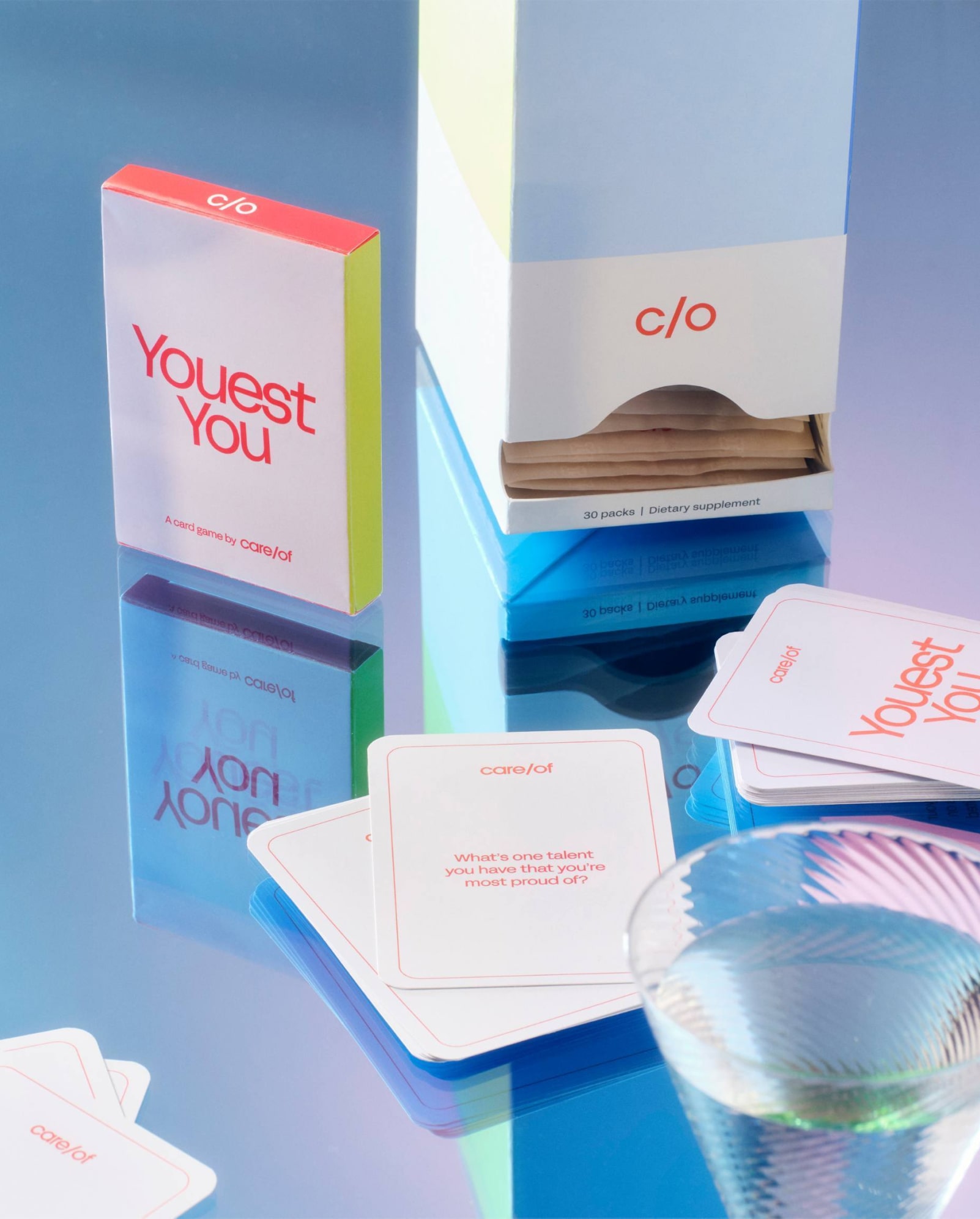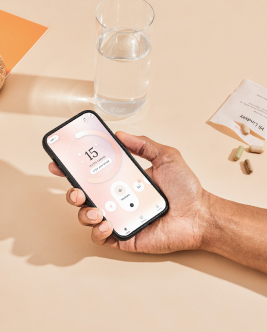lifestyle
What Foods Are High in Vitamin D? (And How You Can Get More)
On This Page

While vitamin D is vital for our health, many of us don’t get enough. Here are some foods that can help us achieve healthy vitamin D levels.
What is Vitamin D?
Vitamin D is a vitamin that’s long been known to help our bodies absorb and retain calcium and phosphorus. Calcium and phosphorus are both critical for promoting bone health. Vitamin D is a fat-soluble nutrient we eat and a hormone our bodies create.
While vitamin D is very important for our health, it’s not contained naturally in many foods. That’s why some foods are fortified with vitamin D. If you want to get enough vitamin D in your diet, the best way may be to take a supplement. Vitamin D supplements are available as vitamin D2 (“ergocalciferol” or pre-vitamin D) and vitamin D3 (“cholecalciferol”). Care/of offers a 30-day supply of easy-to-absorb vitamin D3, manufactured in the U.S. with no unnecessary additives or fillers, and available with a vegan formulation.
Recommended daily amounts for Vitamin D
The National Institutes of Health recommend an average vitamin D intake of 400-800 International Units (IU), depending on your age. For those who are pregnant or breastfeeding, the recommended intake is 600 IU per day. Unfortunately, vitamin D deficiency is one of the most common vitamin deficiencies, in the United States and around the world.
Signs of deficiency and toxicity
Vitamin D deficiency is when you’re not getting enough vitamin D, and vitamin D toxicity is when you’re getting too much. Both conditions can have negative consequences for your health. According to the National Institutes of Health, some signs of a vitamin D deficiency include:
- Bone or muscle pain or weakness
- Stress fractures, particularly in your hips, legs, or pelvis
- Aches, pains, and tiredness
Some signs of vitamin D toxicity include:
- Dehydration
- Confusion
- Vomiting
- Abdominal pain
- Thirst
- Apathy
- Nausea
If you notice any of these signs, you may need to adjust your vitamin D intake. You’re unlikely to get too much vitamin D from food or sunlight. The key to prevent vitamin D toxicity is to stay within the upper limit range of supplementing (4,000 IU or 100 mcg) unless your healthcare provider recommends higher doses based on your blood work. Care/of vitamin D comes in 1000 IU (25mcg) per capsule. As always, check with a medical professional if you have any questions.
People at risk of a Vitamin D deficiency
Vitamin D is a widely shared problem, both in the United States and around the world. About 42% of Americans are vitamin D deficient. The problem is especially pronounced among older adults, infants, and young women. Additionally, the rate of vitamin D deficiency among Black Americans is 82%, while among Hispanic Americans, it’s 70%. The racial and ethnic disparities suggest that systemic forces could be a factor.
Your geographical location also plays a role. If you live somewhere with strong sun throughout the year, your sun exposure may be sufficient to satisfy your vitamin D requirements. However, the further you get from the equator, the more your vitamin D levels will fluctuate with the seasons.
Risk factors for low Vitamin D levels
Since our main source of vitamin D3 is sunlight, inadequate sunlight is a major risk factor for vitamin D deficiency. Other risk factors include inadequate dietary intake of foods containing vitamin D and certain medical conditions that limit the body’s ability to absorb nutrients.
Foods high in Vitamin D
Salmon
Salmon is a delicious and nutritious source of vitamin D. A 3-ounce serving of salmon can provide you between 383-570 IU of vitamin D. That means this single salmon serving will help most folks get their total recommended daily value (DV).
Trout
When it comes to vitamin D supply, you won’t beat rainbow trout. Three ounces of cooked rainbow trout will provide you 645 IU of vitamin D, which, for some, is more than the 100% of the DV.
Cheese
You can get about 85 IU of vitamin D in a single 1.5-ounce serving of low-fat or fat-free fortified American cheese. Cheese is generally a good source of protein and minerals. And lest we forget, it can be quite tasty.
Herring and sardines
Herring and sardines are both great sources of vitamin D. If you’re into fish and you’re looking to incorporate more vitamin D into your diet, these options would be a good place to start. In one 3-ounce serving of herring, you’ll get 182 IU of vitamin D; and, in one 3-ounce serving of canned sardines, you’ll get 164 IU of vitamin D.
Cod liver oil
Not a fan of fish? No problem. Taking a cod liver oil supplement is a good way to get the nutrients you’d otherwise have to get from fish – including vitamin D. Cod liver oil offers you about 450 IU of vitamin D per teaspoon, or more than half of the DV of vitamin D. Cod liver oil is also high in vitamin A; a single teaspoon can offer you about 150% of the DV.
Canned tuna
Canned tuna is a flavorful, easy-to-store, and popular source of vitamin D. Three ounces of canned light tuna contains about 231 iu of vitamin D, or roughly one-third of the DV. Due to concerns about mercury levels, the Environmental Defense Fund recommends only a single 3.5-ounce serving of light tuna weekly.
Egg yolks
When it comes to eggs, you should remember that vitamin D is found in the yolk of the egg only. The yolk from one large egg offers you 37 IU, or about 5% of the DV.
Mushrooms
Among foods that aren’t fortified, mushrooms are the only adequate non-animal source of vitamin D. Mushrooms synthesize vitamin D when exposed to UV light – just like us! It’s worth noting, though, that mushrooms produce vitamin D2, while animals produce vitamin D3. Vitamin D2 can help raise our vitamin D levels, but may not be as effective as vitamin D3. Because of their exposure to UV light, some wild mushrooms are great sources of vitamin D2. Morels, for example, are a type of mushroom that grow in the wild, and one cup of them contains 136 IU of vitamin D. A cup of cremini mushrooms exposed to UV light possesses 1,110 IU of vitamin D, or over 100% of the DV.
Pork chops
If you’re a meat eater, pork chops are also a good source of vitamin D, with one chop (219 g) offering 88 IU of vitamin D, or about 11% of the DV.
Vitamin D fortified foods
Cow’s milk
Cow’s milk is sometimes fortified with vitamin D. You can get 117 IU of vitamin D in one cup, or about 15% of the DV.
Soy milk
Soy milk is sometimes fortified with vitamin D, which is good news if you’re vegan or vegetarian. In one cup, you can get 119 IU of vitamin D, or about 15% of the DV – the same percentage you’d get in cow’s milk.
Orange juice
Having a fortified glass of orange juice to start your day can get you headed in the right direction, with 100 IU of vitamin D in just one cup, or about 12% of the DV. This is an especially good option if you’re one of the many people out there who are lactose intolerant.
Cereal and oatmeal
Cereal and oatmeal are other popular foods that may be fortified with vitamin D. One cup of fortified wheat bran flakes has 145 IU of vitamin D, or about 18% of the DV. Or you can try a cup of fortified crisp rice cereal, which has 85 IU of vitamin D, or 11% of the DV. Of course, not all cereals are fortified this way. Be sure to check the nutrition info on the cereal box before you make your purchase. Moreover, a fortified oatmeal packet can contain 154 IU of vitamin D, or about 19% of the DV.
Tofu
If you’re vegetarian, vegan, or just a tofu lover, you can add some fortified tofu to your diet to get the vitamin D you need. Some brands offer up to 139 of IU of vitamin D in every 18 gram serving, or about 17% of the DV.
Yogurt
Not only is yogurt simple and tasty, but you can also get 116 IU of vitamin D in one 8 ounce serving.
Vitamin D and Calcium
Calcium is critical to your bone health, and vitamin D helps your body absorb more calcium. That’s why it’s so critical to maintain healthy levels of vitamin D. Pay attention to your sun exposure, and try to incorporate some of the foods listed above, which are good sources of vitamin D.



